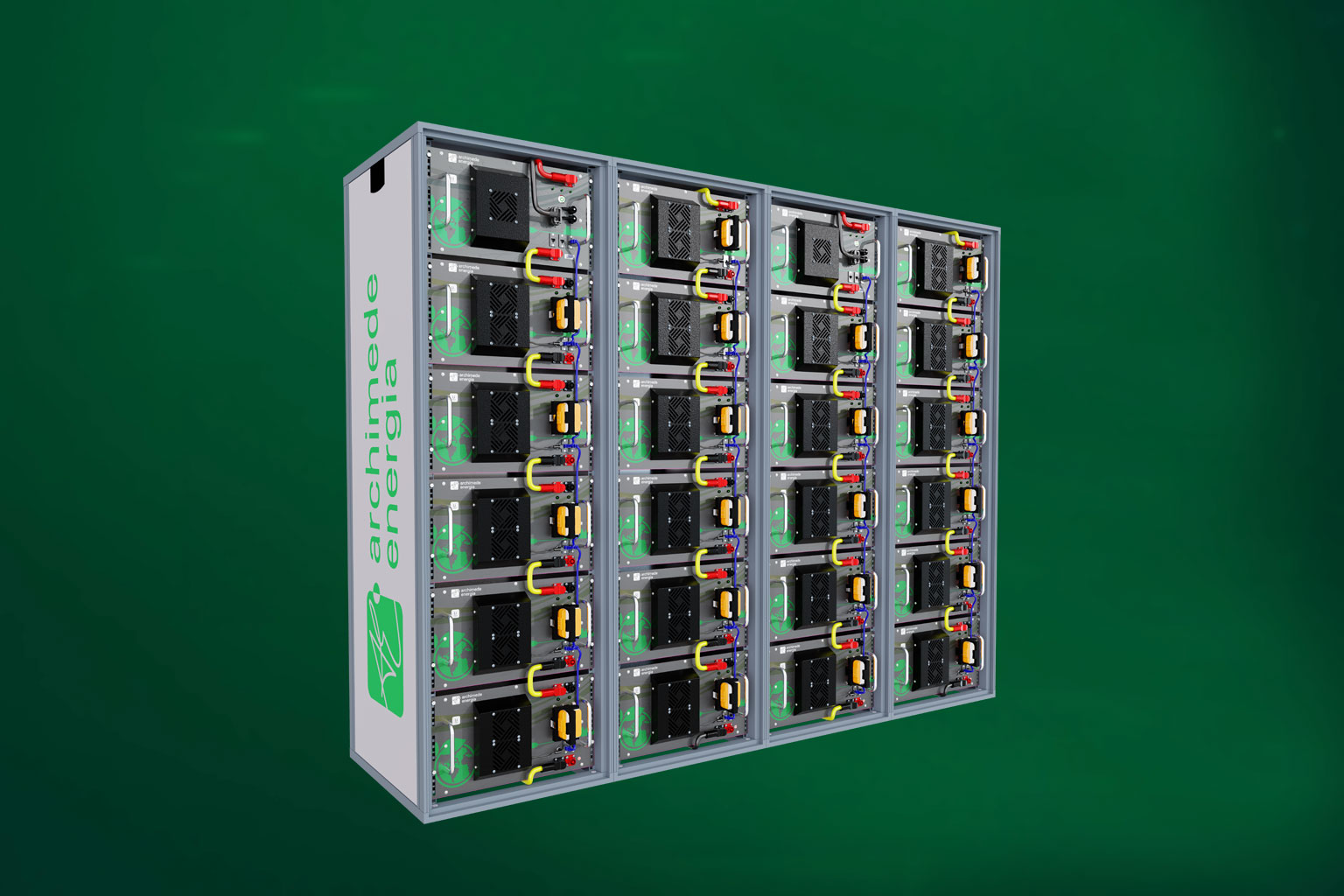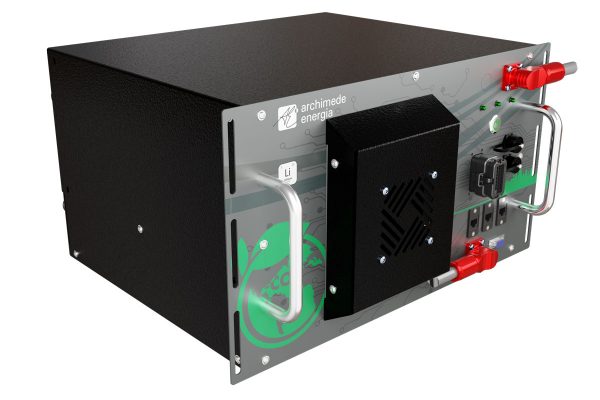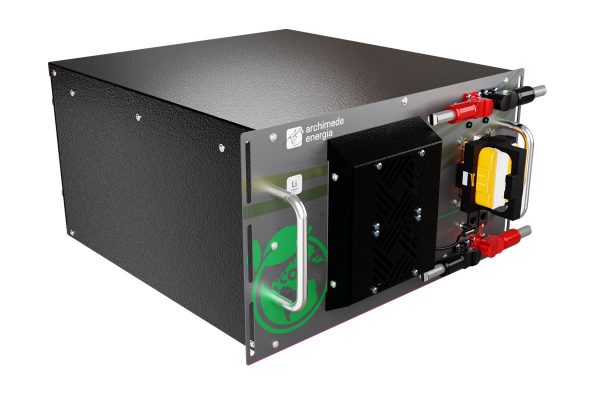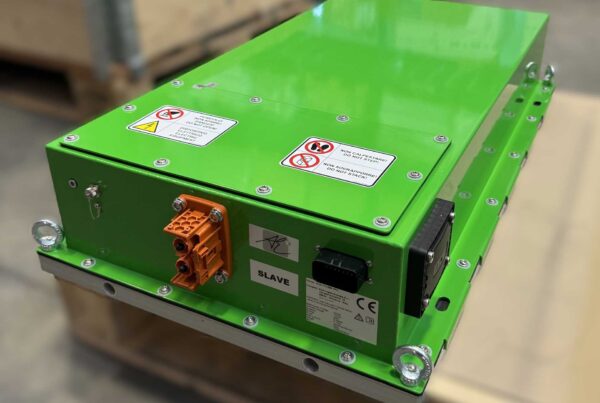In a world increasingly focused on decarbonization, Battery Energy Storage Systems (BESS) have become an essential technological pillar. Alongside the growing use of renewable sources such as solar and wind, BESS offer the flexibility needed to store and distribute energy intelligently, continuously, and safely.
What does BESS mean: definition and key components
A BESS is an energy storage system based on rechargeable batteries, mainly lithium-ion. Its dual role is to store excess energy and release it when needed. The architecture of a BESS is complex and modular, consisting of:
- Batteries (modules, racks, cabinets): the core of the system, often made with LFP (lithium-iron-phosphate) cells.
- BMS (Battery Management System): monitors cell status and intervenes in case of anomalies.
- PCS (Power Control System): manages the inverter/rectifier to convert energy between DC and AC.
- EMS (Energy Management System): coordinates the energy flow between the grid, users, and storage.
- HVAC, fire protection, and safety systems: ensure thermal management and safety across the entire system.
These components are integrated into modular containers, scalable from a few kWh up to hundreds of MWh, suitable for residential, industrial, utility, or off-grid applications.

How a BESS system works: from charging to discharging
The functioning of a BESS system can be summarized in four main phases:
- Charging: during overproduction (e.g., sunny hours), the system stores energy.
- Storage: energy is retained until needed.
- Discharging: energy is released when demand exceeds production.
Active Control: the BMS and EMS dynamically regulate flows, state of charge, and safety.
The importance of BESS in managing renewable energy
Unlike fossil fuels, renewables are intermittent and cannot be controlled in terms of production timing. Without storage systems, surplus energy would be wasted, and demand peaks could lead to blackouts. BESS systems:
- Store energy when available.
- Release it when production drops or demand increases.
- Help stabilize the grid by maintaining frequency and voltage levels.
Without storage, renewables cannot become a primary energy source. BESS enable self-consumption, manage peak loads, reduce emissions, and are essential for the smart grids of the future.
Where BESS systems are used
Battery Energy Storage Systems are used in various sectors:
- Residential (homes and apartment buildings): paired with home photovoltaic systems to increase energy independence.
- Industrial and commercial: to optimize energy costs, avoid peak consumption penalties, and reduce environmental impact.
- Public infrastructure, utilities, and power grids: to balance large-scale production and consumption, support renewables, and prevent blackouts.
- Electric mobility: combined with EV charging stations and smart charging for AGVs and off-grid vehicles.
- Off-grid and construction environments: in isolated areas or with unstable grids (e.g., lighting towers, islands, electric boats), where BESS ensures continuity and autonomy.
Events and mobile applications: BESS mounted on trucks or trailers (Mobile Energy Storage Units) to power lights, audio systems, and technical equipment—offering silence and zero emissions as an alternative to diesel generators.
The benefits of lithium-based BESS: efficiency, savings, and sustainability
Lithium technology, especially LFP (lithium-iron-phosphate), is the most widely adopted in BESS thanks to its numerous advantages in terms of efficiency, lifespan, and safety. Key features include:
- High energy density in compact size.
- Superior charge/discharge efficiency.
- Over 6000 charge cycles.
- Outstanding thermal and chemical safety.
- Low maintenance needs.
These features make lithium BESS ideal for various applications—from managing home energy loads to integrating into complex industrial systems.
Beyond the technical advantages, BESS provide strategic benefits for the energy transition. They optimize self-consumption, using renewable energy even when the sun isn’t shining or the wind isn’t blowing. They lower energy costs by avoiding peak withdrawals from the grid and making use of stored energy during favorable times. BESS also support grid stability during critical periods and offer backup power during outages. Most importantly, they are a cornerstone of decarbonization, enabling more efficient use of renewables and reducing dependence on fossil fuel generators.
At Archimede Energia, as specialized producers of lithium batteries, we design and manufacture modular, safe, and easy-to-integrate BESS systems, tailored to support the growth of renewables in every application context.
How is a BESS integrated with a solar PV system?
Integrating a BESS with a photovoltaic system is now one of the most popular solutions. Excess energy produced during sunny hours is stored in batteries and used in the evening or during high consumption periods. This increases self-consumption, reduces grid usage, and improves overall system efficiency.
During the design phase, it’s essential to correctly size the battery, choose a compatible inverter, and ensure the BMS can safely manage the entire system.
What is the lifespan of a BESS system?
The lifespan of a BESS depends on the battery technology and usage conditions. LFP lithium batteries, the most widely used in modern BESS, offer:
- Up to 6000 charge/discharge cycles.
- Over 10 years of operational life with minimal maintenance.
- Round-trip efficiency up to 95% (meaning only 5% of energy is lost during the charge-discharge cycle).
Are BESS systems safe?
If not properly managed, lithium batteries can experience thermal, electrical, or mechanical failures, potentially leading to thermal runaway. That’s why modern BESS feature a multi-layered safety system:
- Electrical barriers: fuses, DC breakers, off-gas sensors (e.g., Li-Ion Tamer) to detect issues early.
- Physical and fire barriers: ventilation, flooding systems, foam or powder extinguishers, blast walls.
- Advanced monitoring: toxic gas detectors and thermal insulation between modules.
- International certifications: CEI, UL, IEC, etc.
Safety also depends on the quality of components used and the expertise of the manufacturer and integrator.
What battery technologies are used in BESS?
The main battery technologies used in BESS today include:
- LFP (Lithium Iron Phosphate): most common, offering a great balance of safety, longevity, and cost.
- NMC (Nickel-Manganese-Cobalt): higher energy density but more heat-sensitive.
- Lead-acid: more affordable, but less efficient and with a shorter lifespan.
- Sodium-sulfur or Flow Batteries: emerging solutions for large-scale applications.
Why BESS are essential for the energy transition
Shifting from a fossil-fuel-based model to one centered on renewables requires flexibility, reliability, and distributed intelligence. BESS systems are a concrete response to these needs:
- They support decarbonization by reducing fossil fuel generator use.
- They enable large-scale renewable integration without waste or structural limits.
- They increase power grid resilience, especially in critical contexts.
- They support the growth of energy communities and local self-production.
In summary, a BESS is much more than a “giant battery”: it’s a technological enabler and a cornerstone of the new energy paradigm.
Investing in a BESS system means investing in a more sustainable future
At Archimede Energia, we work every day to develop high-performance lithium batteries that are reliable and easy to integrate. Because the energy transition is not just a goal—it’s a tangible direction, driven by conscious technological choices.
Want to learn more or integrate a BESS into your project?
Contact us for personalized technical consulting or to explore our lithium battery storage solutions.
Write us at: info@archimede-energia.com
Or call us at: +39 0323 586222
Archimede Energia – We build high-performance lithium batteries, ready to simplify the energy of tomorrow.








